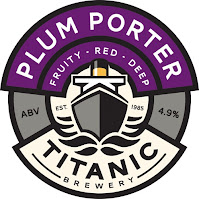...while the 3rd game in the Annexation Campaign carries on (we're up to move 4) I recently finished reading "All For a Shilling a Day" and it was good enough that I thought it more than deserved a proper post 
This is Donald Featherstone's depiction of the 16th (Queen's) Lancers [clicky] during, and just before, the First Sikh War of 1845 [clicky] and although it must be 30 odd years since I last read it, I found it fascinating..
It starts with recruitment, how it was done, conditions, pay and arrears once the recruits arrived at the home depot, the tedium and squalor of barracks living, poor food, poor pay (no wonder they drank as much as they did!). The training (doubly hard in a crack Lancer regiment as they also had to learn to ride), manoeuvres, and the day to day relationship between officers and men in a peace situation (basically none!), and how it changed dramatically when they were on a war footing.
The book is a contrast, the regiment in two states, war and peace, and no wonder the Victorians loved to go to war as much as they did as the contrasts between the two are marked - much more freedom when on campaign.
The second part of the book deals with their campaign as part of the First Sikh War where they served under Sir Harry Smith [clicky], and fought at the battle of Aliwal [clicky]. The book is quite short, what I found most interesting were the copious (and I mean copious!) notes.. I'd recommend reading the book, and then reading the notes separately so as not to disrupt the flow, but they are fascinating - Don clearly had an eye for the snippets that helped to illustrate life in the military at the time ... I was left with an overwhelming opinion that our forefathers were made of very tough stuff!
Cacker.. 9 out of 10 without a doubt..

This is Donald Featherstone's depiction of the 16th (Queen's) Lancers [clicky] during, and just before, the First Sikh War of 1845 [clicky] and although it must be 30 odd years since I last read it, I found it fascinating..
It starts with recruitment, how it was done, conditions, pay and arrears once the recruits arrived at the home depot, the tedium and squalor of barracks living, poor food, poor pay (no wonder they drank as much as they did!). The training (doubly hard in a crack Lancer regiment as they also had to learn to ride), manoeuvres, and the day to day relationship between officers and men in a peace situation (basically none!), and how it changed dramatically when they were on a war footing.
The book is a contrast, the regiment in two states, war and peace, and no wonder the Victorians loved to go to war as much as they did as the contrasts between the two are marked - much more freedom when on campaign.
The second part of the book deals with their campaign as part of the First Sikh War where they served under Sir Harry Smith [clicky], and fought at the battle of Aliwal [clicky]. The book is quite short, what I found most interesting were the copious (and I mean copious!) notes.. I'd recommend reading the book, and then reading the notes separately so as not to disrupt the flow, but they are fascinating - Don clearly had an eye for the snippets that helped to illustrate life in the military at the time ... I was left with an overwhelming opinion that our forefathers were made of very tough stuff!
Cacker.. 9 out of 10 without a doubt..






